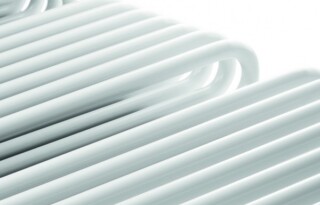There is not a room in the house that does not get dirty after a while. Things are no different when it comes to radiators, which not only get dusty, but also end up requiring more technical maintenance in due course. The way to put this off for as long as possible is to properly service your radiators and clean them on a regular basis. Whether you are looking to bleed, clean or disconnect your radiators, we explain how to go about it.
Bleeding the radiators
Gurgling sounds are the indication you have got air bubbles inside your central heating system. This is not only a nuisance, it also has a negative impact on the yield of your heating system and may permanently damage your radiators (as a result of oxidation). Thankfully, this little problem is easily redressed by bleeding your radiators. Read our full step-by-step plan and find out how to let out excess air from your radiators.
Cleaning the radiators
Dust will settle wherever it gets half a chance. There is no getting round that. But one thing you can do is to mop the dust often enough to make sure your home interior remains fresh, clean and healthy.
Cleaning your radiators is easy enough. To start with, give them a good dust down. Vacuum the dust – as far as possible – using the hoover or remove the dust using a damp cloth. Use a long feather duster between the tubes of your ladder radiator or vertical designer radiator.
Have you got convective heating units? In that case you will have found that they are an inescapable focal point where dust will gather. Here too, the easiest way to clean them is to use a long feather duster.
How to disconnect your radiators?
To make sure your heating installation and your radiators enjoy a long service life, regular services – check, bleed and clean – are indispensable. However, sometimes your radiators simply need replacing after decades in service. If that is the case, do not dilly-dally and replace them right away with new, high-quality radiators, which are not only more energy-efficient, but also look ten times better than your old cast iron radiators.
No idea how to remove your radiators from the wall? Luckily, Vasco has a practical step-by-step plan which explains exactly how to disconnect your radiators that’s just a click away!
